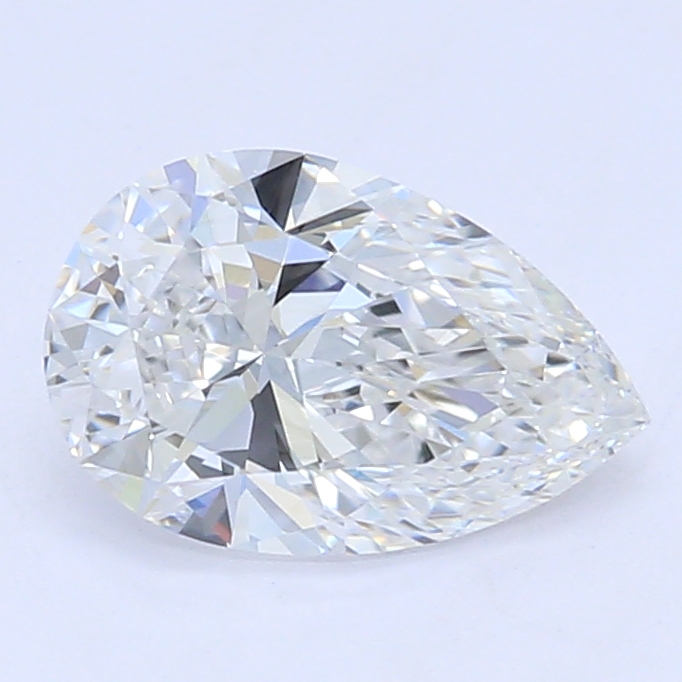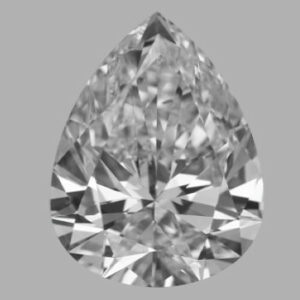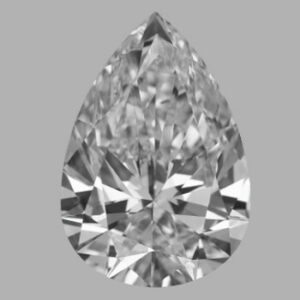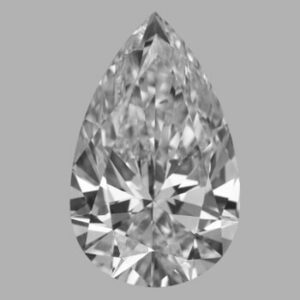Engagement Ring - In Progress
Setting
Stone
We guarantee that every single purchase directly impacts one person's life by giving them access to clean water.
Pear shaped diamonds are unique shapes with a point at the top and a graceful curve at the bottom. They can be long and slender, or shorter and plump. Pears are one of only two diamond shapes that are not symmetrical both horizontally and vertically (the other shape being the Heart). They are beautiful, elegant, and relatively rare. In fact, at the time of writing, only 4% of GIA-certified diamonds available for sale globally were Pears (47,429 Pears out of 1,178,007 total diamonds).
Like other fancy cut diamonds, the GIA does not grade Pears for cut. For this reason, it is important to note that any website or store that advertises a GIA-certified Pear diamonds with a cut grade is offering their own grade. So, the accompanying GIA certificate will not have a cut grade. While there is no problem with this, we strongly recommend you verify the cut quality yourself. The information below serves as a general guideline for evaluating the cut grade of a Pear.
The elegance, sparkle, and allure of a Pear cut comes from the quality of its cut. Pear diamonds that are not well cut can show dark bow-ties, and can leak light instead of reflect it. Here are a few things to consider:
PEAR DIAMOND BOWTIES
All pear diamonds have a bowtie area. This is because the facets in the rounded section of the stone are shorter and steeper than the length facets. Overly dark bowties should be avoided as they are distracting. Watery bowties should be avoided as they cause the stone to lose sparkle.
Here is an example of a pear cut diamond with a beautifully blended bowtie, next to a diamond with a dark, distracting bowtie.


EVEN CONTRAST/BRILLIANCE
Contrast refers to areas of darker colored reflection within your stone, whereas brilliance means lighter reflection! Choosing a stone with even areas of contrast and brilliance will ensure maximum sparkle.
Here is an example of a pear cut diamond with beautiful contrast and brilliance, next to a stone with a washed out appearance:


Here are additional table and depth percentages which will help:
| IDEAL/EXCELLENT | PREMIUM | GOOD | |
| TABLE | 53-63 | 64-65 | 66+ |
| DEPTH | 60-63 | 64-66 | 67+ |
The color grade of a diamond refers to how white it is, or how much yellow tint it has. Evaluating color in Pears is important, because Pears can show more color than other shapes, especially in its point.
So, if you want an ice-white diamond, it is best to stick in the D-F color range. However, if you just want your stone to look “white,” you can likely get away with a G, H, or even I color, depending on the size of the stone and your metal color. For example, yellow and rose gold can hide a bit of diamond color, whereas white gold and platinum require a more colorless stone.
Here is an example of an I color pear cut diamond next to an E color pear shape.


The information below will help you determine what your ideal diamond color is, based carat weight, and your personal color preference.
| WHITE METAL | YELLOW OR ROSE METAL | |
| >1ct | D-G | D-I |
| 1-2ct | D-G | D-H |
| 2+ct | D-F | D-G |
The clarity grade of a diamond is how “crystal clear” the stone is, or how many internal marks (“inclusions”) it has. Most couples we work with want an “eye clean” diamond for their Pear engagement ring. In other words, they want a stone which does not show any inclusions to the naked eye. The clarity grade that you need to attain “eye clean” appearance changes with size. It’s harder to see flaws on smaller Pears than larger ones. However, because Pears are, effectively, a combination of Round and Marquise cut diamonds, they hide blemishes fairly well within their brilliance and sparkle.
Each consumer has their own standard for clarity. Some may be perfectly comfortable with inclusions as long as they cannot easily see it, but others may insist on a more technically flawless appearance. The clarity information below provides general guidelines for picking a clarity rating for your Pear, based on your inclusion tolerance.
Here is an example of an SI1 clarity pear cut next to a VS1 clarity pear shaped diamond.


The following is what we recommend to our couples:
| CLARITY | |
| >1ct | SI1+ |
| 1-2ct | VS2+ |
| 2+ct | VS1+ |
All Pear cut diamonds in our diamond search engine have the length to width ratio listed. This ratio, which is simply the length divided by the width, determines how skinny or wide the pear cut diamond is. So, the larger the length to width ratio, the taller and more slender the Pear. Likewise, the smaller the length to width ratio, the plumper the Pear cut diamond. Our favorite range for Pears is 1.45-1.60.
Note about Pear Shaped Halo Engagement Rings: If you opt for a halo setting, your Pear may end up looking wider! This is because the halo gives the illusion of a wider pear cut diamond with a smaller length to width ratio. To avoid this, choose a Pear with a slightly higher length to width ratio than your preference.

1.30

1.45

1.60
When looking for a Pear diamond, make sure to always look for symmetrical shape and lack of dark bowtie. Also, try to maximize measurements within your ideally cut diamond. For example, you can have a 1.0 carat Pear with the measurements 8.50 x 5.50 mm that is ideally cut. But, there could also be a 0.98 carat Pear with measurements 8.60 x 5.60 mm that is just as ideally cut and probably cheaper. All diamonds in our “Recommended” stone section have had their dimensions reviewed to make sure they were being maximized for their carat weight, while maintaining an ideal cut.
01.
Photo & Video - Always ask the jeweler you are buying from for a detailed picture or video. Look for pleasing shape and lack of bowtie.
02.
Inspect It - Ask the jeweler to pull the diamond and actually visually inspect. Confirm eye-clean appearance.
03.
Measure It - Make sure your Pear’s measurements are maximized within your carat size.